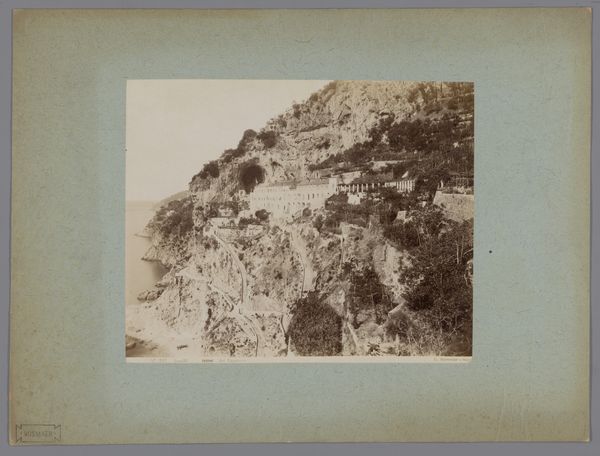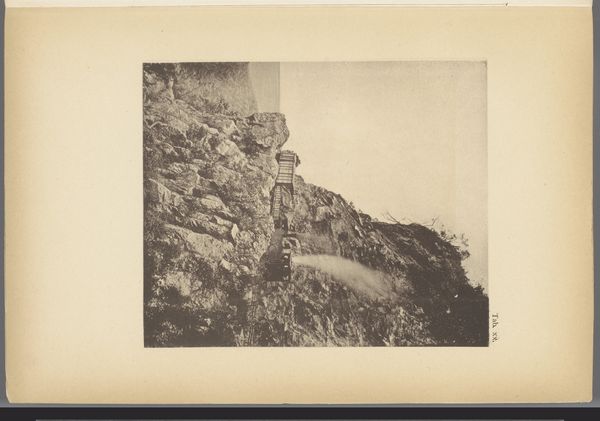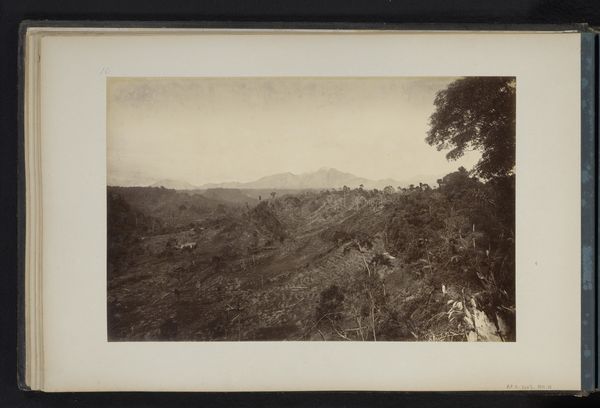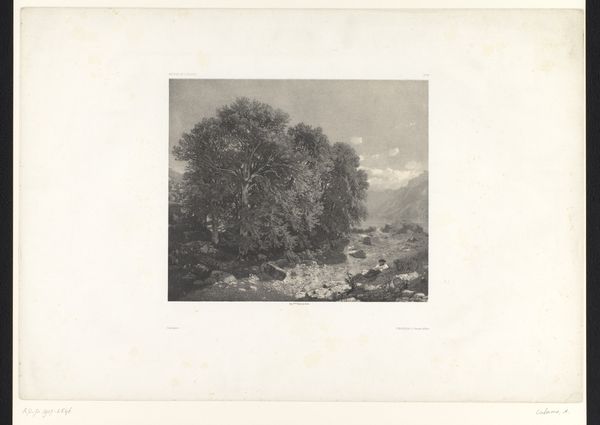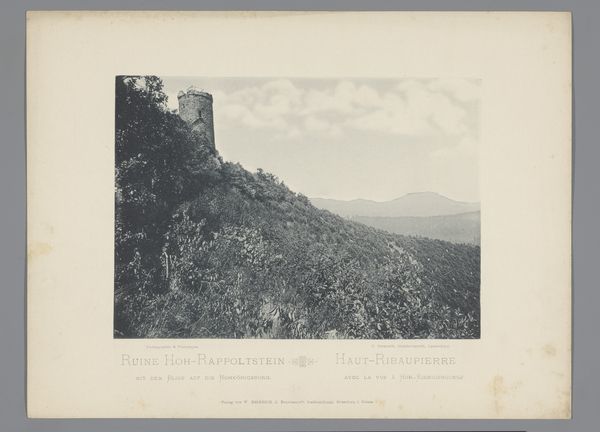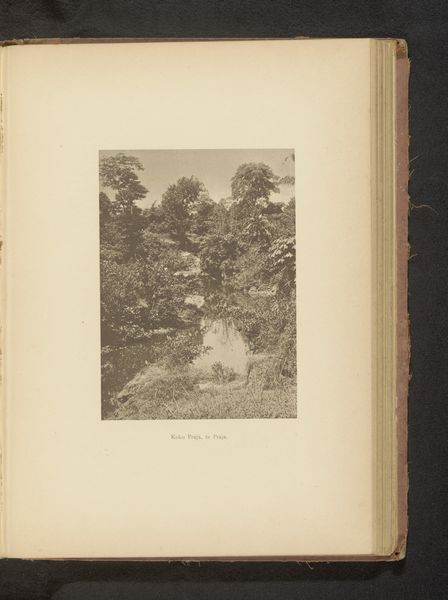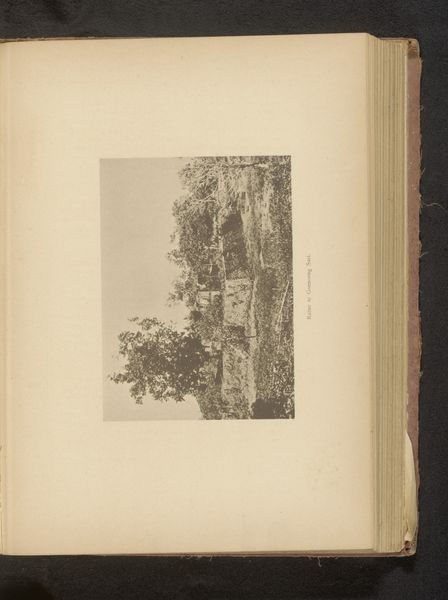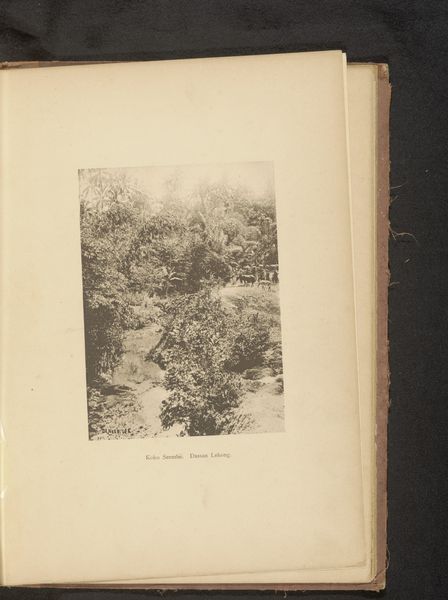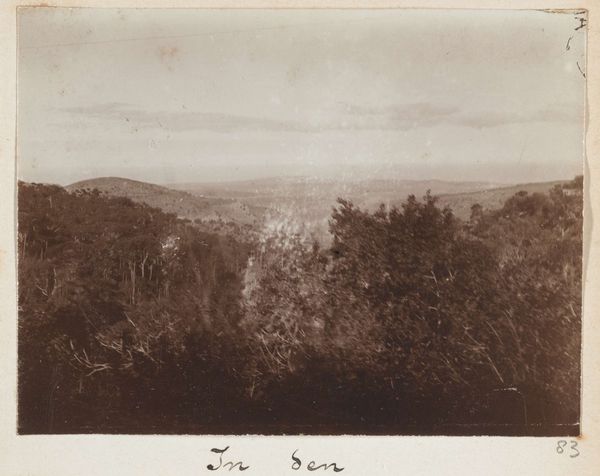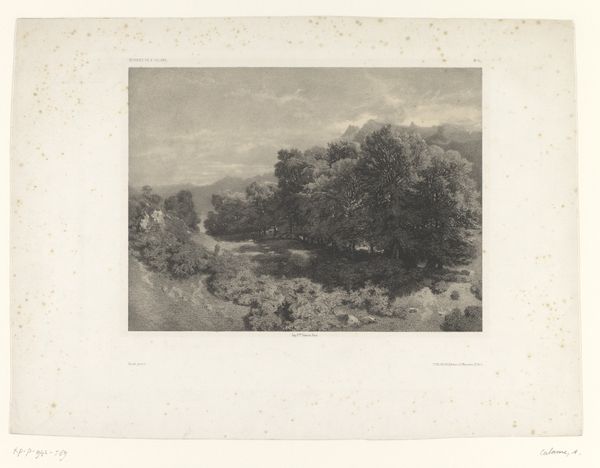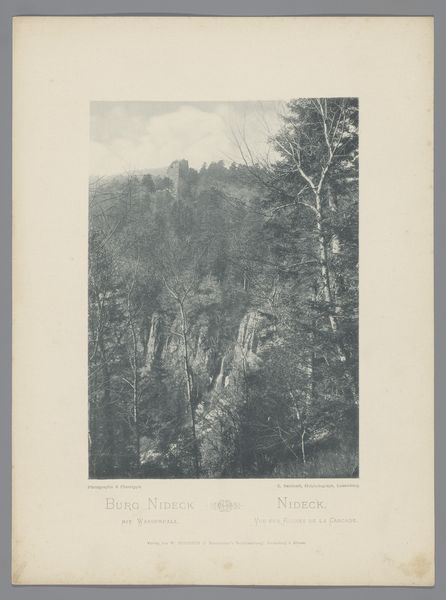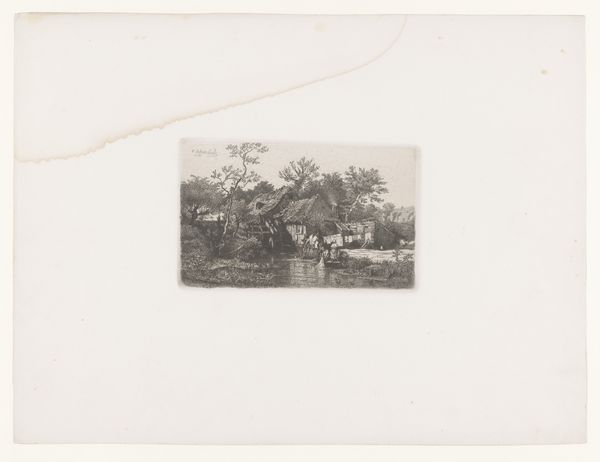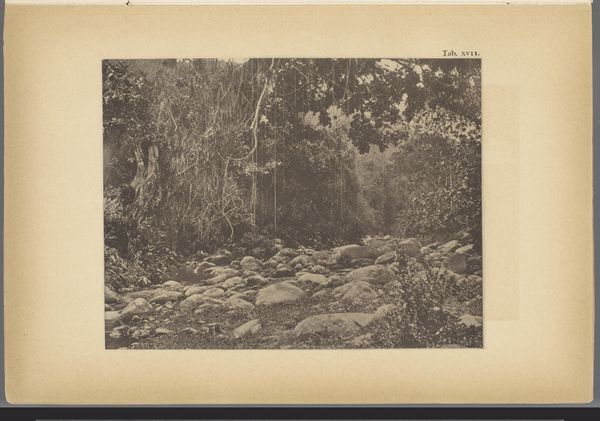
print, photography
# print
#
landscape
#
photography
#
watercolor
Dimensions: height 153 mm, width 217 mm
Copyright: Rijks Museum: Open Domain
Charles Bernhoeft created this photogravure of the Hohlandsbourg Castle ruins, likely in the late 19th or early 20th century. The image presents us with a romantic vision, the ruin is enshrouded in foliage, a relic of a bygone era, a scene of naturalized history. This representation is loaded with cultural and historical associations. Hohlandsbourg Castle, located in Alsace, France, carries a complex history marked by shifting national allegiances between France and Germany. Built in the 13th century, it was destroyed in the 17th century during the Thirty Years' War. Bernhoeft's choice to depict the ruin speaks to a broader European fascination with ruins as symbols of lost empires, the transience of power, and the picturesque decay of history. To understand this image fully, we might research the history of Alsace, the rise of tourism in the late 19th century, and the cultural meanings associated with ruins in European art and literature. Historical interpretation helps us contextualize the production and reception of art, highlighting the dynamic interplay between artistic representation and social change.
Comments
No comments
Be the first to comment and join the conversation on the ultimate creative platform.
